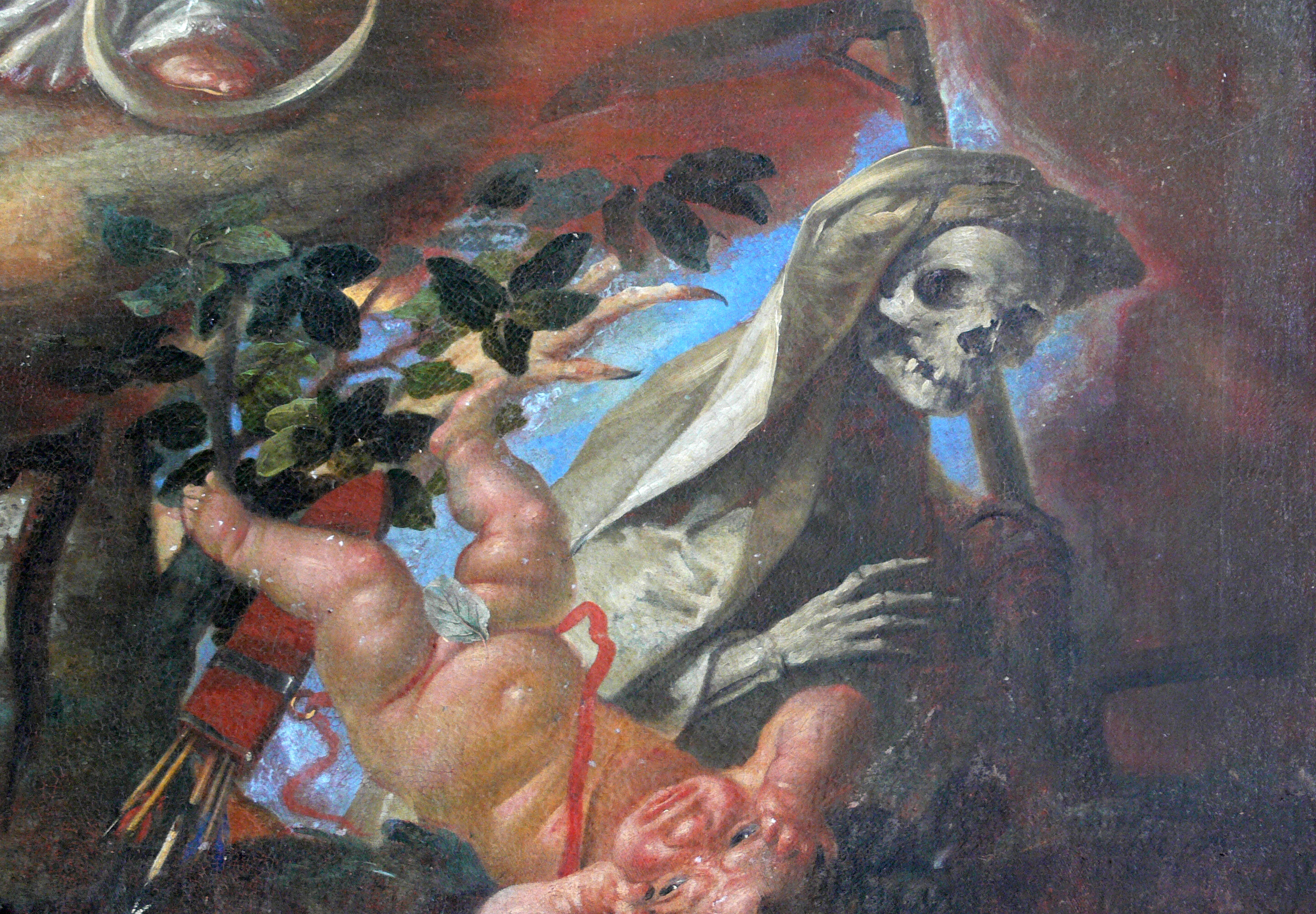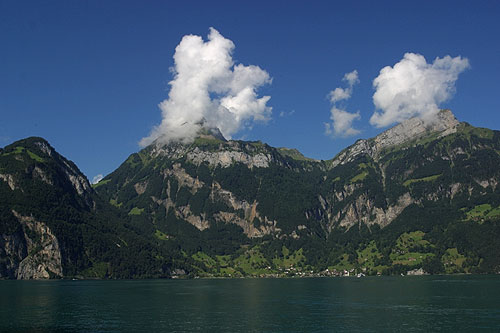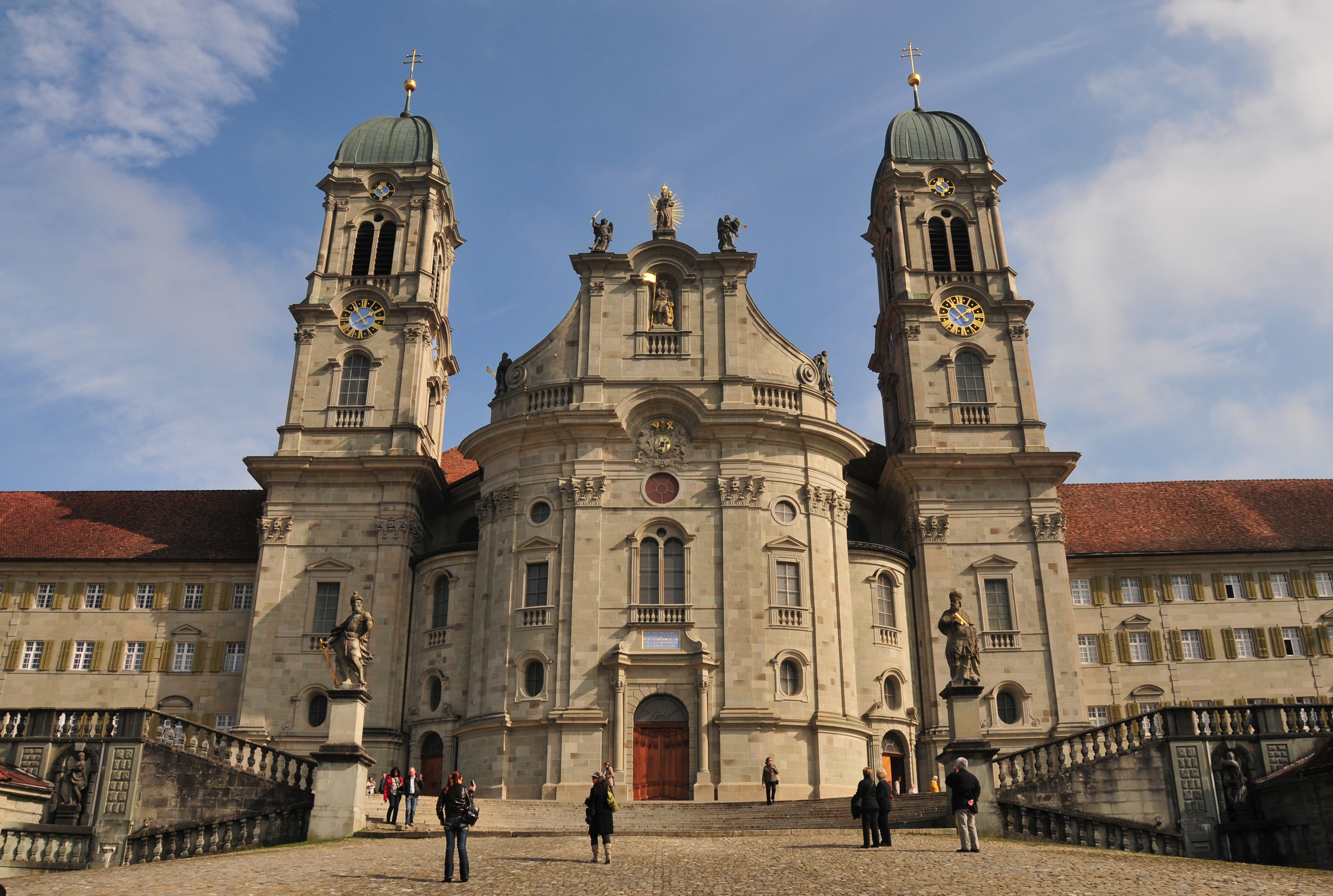|
Johann Michael Feuchtmayer The Elder
Johann Michael Feuchtmayer (the Elder) (17 April 1666 (baptism) – 15 October 1713) was a German painter and copper engraver. Life and work He was born in Wessobrunn, into the famous Feuchtmayer family of Baroque artists associated with the Wessobrunner School. He was the brother of Franz Joseph Feuchtmayer (1660–1718) and Michael Feuchtmayer (b. 1667); the uncle of Joseph Anton Feuchtmayer (1696–1770), Franz Xaver Feuchtmayer (the Elder) (1705–1764), and Johann Michael Feuchtmayer (the Younger) (1709–1772); and the great-uncle of Franz Xaver Feuchtmayer (the Younger) (b. 1735). J. M. Feuchtmayer is most famous for the 1706 high altar paintings in the Catholic Parish Church of St. Idda in Bauen, Switzerland. With his brother Franz Joseph, he was also responsible for the choir stalls in the Benedictine monastery church in Einsiedeln, Switzerland. He died in Konstanz Konstanz (, , locally: ; also written as Constance in English) is a university ... [...More Info...] [...Related Items...] OR: [Wikipedia] [Google] [Baidu] |
Bauen
Bauen is a former municipality on Lake Lucerne in the Swiss canton of Uri. On 1 January 2021 the former municipality of Bauen merged into the municipality of Seedorf. History Bauen is first mentioned in 1150 as ''Bawen''. The municipalities of Seedorf and Bauen were the first in the canton that voluntarily decided to merge, after an amendment of the cantonal constitution allowed such mergers. The merger was planned to take place on 1 January 2021, provided it would be approved by the population of both municipalities in a referendum that was held in 2019. The referendum took place in October 2019; the population of both Seedorf and Bauen voted in favor of the merger with 80% and 69% respectively. The merger took place on 1 January 2021. Geography Bauen had an area, , of . Of this area, 13.5% is used for agricultural purposes, while 74.9% is forested. Of the rest of the land, 2.9% is settled (buildings or roads) and the remainder (8.7%) is non-productive (rivers, glaciers or ... [...More Info...] [...Related Items...] OR: [Wikipedia] [Google] [Baidu] |
German Engravers
German(s) may refer to: * Germany (of or related to) **Germania (historical use) * Germans, citizens of Germany, people of German ancestry, or native speakers of the German language ** For citizens of Germany, see also German nationality law **Germanic peoples (Roman times) * German language **any of the Germanic languages * German cuisine, traditional foods of Germany People * German (given name) * German (surname) * Germán, a Spanish name Places * German (parish), Isle of Man * German, Albania, or Gërmej * German, Bulgaria * German, Iran * German, North Macedonia * German, New York, U.S. * Agios Germanos, Greece Other uses * German (mythology), a South Slavic mythological being * Germans (band), a Canadian rock band * "German" (song), a 2019 song by No Money Enterprise * ''The German'', a 2008 short film * "The Germans", an episode of ''Fawlty Towers'' * ''The German'', a nickname for Congolese rebel André Kisase Ngandu See also * Germanic (other) * Germa ... [...More Info...] [...Related Items...] OR: [Wikipedia] [Google] [Baidu] |
18th-century German Male Artists
The 18th century lasted from January 1, 1701 ( MDCCI) to December 31, 1800 ( MDCCC). During the 18th century, elements of Enlightenment thinking culminated in the American, French, and Haitian Revolutions. During the century, slave trading and human trafficking expanded across the shores of the Atlantic, while declining in Russia, China, and Korea. Revolutions began to challenge the legitimacy of monarchical and aristocratic power structures, including the structures and beliefs that supported slavery. The Industrial Revolution began during mid-century, leading to radical changes in human society and the environment. Western historians have occasionally defined the 18th century otherwise for the purposes of their work. For example, the "short" 18th century may be defined as 1715–1789, denoting the period of time between the death of Louis XIV of France and the start of the French Revolution, with an emphasis on directly interconnected events. To historians who expand ... [...More Info...] [...Related Items...] OR: [Wikipedia] [Google] [Baidu] |
18th-century German Painters
The 18th century lasted from January 1, 1701 ( MDCCI) to December 31, 1800 ( MDCCC). During the 18th century, elements of Enlightenment thinking culminated in the American, French, and Haitian Revolutions. During the century, slave trading and human trafficking expanded across the shores of the Atlantic, while declining in Russia, China, and Korea. Revolutions began to challenge the legitimacy of monarchical and aristocratic power structures, including the structures and beliefs that supported slavery. The Industrial Revolution began during mid-century, leading to radical changes in human society and the environment. Western historians have occasionally defined the 18th century otherwise for the purposes of their work. For example, the "short" 18th century may be defined as 1715–1789, denoting the period of time between the death of Louis XIV of France and the start of the French Revolution, with an emphasis on directly interconnected events. To historians who expand ... [...More Info...] [...Related Items...] OR: [Wikipedia] [Google] [Baidu] |
German Male Painters
German(s) may refer to: * Germany (of or related to) **Germania (historical use) * Germans, citizens of Germany, people of German ancestry, or native speakers of the German language ** For citizens of Germany, see also German nationality law **Germanic peoples (Roman times) * German language **any of the Germanic languages * German cuisine, traditional foods of Germany People * German (given name) * German (surname) * Germán, a Spanish name Places * German (parish), Isle of Man * German, Albania, or Gërmej * German, Bulgaria * German, Iran * German, North Macedonia * German, New York, U.S. * Agios Germanos, Greece Other uses * German (mythology), a South Slavic mythological being * Germans (band), a Canadian rock band * "German" (song), a 2019 song by No Money Enterprise * ''The German'', a 2008 short film * "The Germans", an episode of ''Fawlty Towers'' * ''The German'', a nickname for Congolese rebel André Kisase Ngandu See also * Germanic (other) * Germa ... [...More Info...] [...Related Items...] OR: [Wikipedia] [Google] [Baidu] |
17th-century German Painters
The 17th century lasted from January 1, 1601 ( MDCI), to December 31, 1700 ( MDCC). It falls into the early modern period of Europe and in that continent (whose impact on the world was increasing) was characterized by the Baroque cultural movement, the latter part of the Spanish Golden Age, the Dutch Golden Age, the French ''Grand Siècle'' dominated by Louis XIV, the Scientific Revolution, the world's first public company and megacorporation known as the Dutch East India Company, and according to some historians, the General Crisis. From the mid-17th century, European politics were increasingly dominated by the Kingdom of France of Louis XIV, where royal power was solidified domestically in the civil war of the Fronde. The semi-feudal territorial French nobility was weakened and subjugated to the power of an absolute monarchy through the reinvention of the Palace of Versailles from a hunting lodge to a gilded prison, in which a greatly expanded royal court could be more easily k ... [...More Info...] [...Related Items...] OR: [Wikipedia] [Google] [Baidu] |
1713 Deaths
Events January–March * January 17 – Tuscarora War: Colonel James Moore leads the Carolina militia out of Albemarle County, North Carolina, in a second offensive against the Tuscarora. Heavy snows force the troops to take refuge in Fort Reading, on the Pamlico River. * February 1 – Skirmish at Bender, Moldova: Charles XII of Sweden is defeated by the Ottoman Empire. * February 4 – Tuscarora War: The Carolina militia under Colonel James Moore leaves Fort Reading, to continue the campaign against the Tuscarora. * February 25 – Frederick William I of Prussia begins his reign. * March 1 – Tuscarora War: Colonel James Moore's Carolina militia lays siege to the Tuscaroran stronghold of Fort Neoheroka, located a few miles up Contentnea Creek from Fort Hancock. * March 20 – Tuscarora War: Colonel James Moore's Carolina militia launches a major offensive against Fort Neoheroka. * March 23 – Tuscarora War: Fort Neoheroka falls to the ... [...More Info...] [...Related Items...] OR: [Wikipedia] [Google] [Baidu] |
1666 Births
This is the first year to be designated as an ''Annus mirabilis'', in John Dryden's 1667 poem so titled, celebrating England's failure to be beaten either by the Dutch or by fire. It is the only year to contain each Roman numeral once in descending order (1000(M)+500(D)+100(C)+50(L)+10(X)+5(V)+1(I) = 1666). Events January–March * January 17 – The Chair of Saint Peter (''Cathedra Petri'', designed by Bernini) is set above the altar in St. Peter's Basilica in Rome. * February 1 – The joint English and Scottish royal court returns to London, as the Great Plague of London subsides. * March 11 – The tower of St. Peter's Church in Riga, collapses, burying eight people in the rubble. April–June * April 20 – In colonial British North America, " Articles of Peace and Amity" are signed between the governments of the Province of Maryland and 12 Eastern Algonquian tribes — the Piscataways, Anacostancks, Doegs, Mattawomans, Portobac ... [...More Info...] [...Related Items...] OR: [Wikipedia] [Google] [Baidu] |
Konstanz
Konstanz (, , locally: ; also written as Constance in English) is a university city with approximately 83,000 inhabitants located at the western end of Lake Constance in the south of Germany. The city houses the University of Konstanz and was the residence of the Roman Catholic Diocese of Konstanz for more than 1,200 years. Location The city is located in the state of Baden-Württemberg and situated at the banks of Lake Constance (''Bodensee'' in German). The river Rhine, which starts in the Swiss Alps, passes through Lake Constance and leaves it, considerably larger, by flowing under a bridge connecting the two parts of the city. North of the river lies the larger part of the city with residential areas, industrial estates, and the University of Konstanz; while south of the river is the old town, which houses the administrative centre and shopping facilities in addition to the ''Hochschule'' or the ''University of Applied Sciences''. Car ferries provide access across Lake Con ... [...More Info...] [...Related Items...] OR: [Wikipedia] [Google] [Baidu] |
Einsiedeln, Switzerland
Einsiedeln () is a municipality and district in the canton of Schwyz in Switzerland known for its monastery, the Benedictine Einsiedeln Abbey, established in the 10th century. History Early history There was no permanent settlement in the area prior to the early medieval period, but numerous artefacts left by prehistoric hunters, dated to the Mesolithic to Bronze Age were recovered. The original " hermitage" is associated with St. Meinrad, a Benedictine monk family of the Counts of Hohenzollern. According to legend, Meinrad lived on the slopes of Mt. Etzel from 835 until his death in 861. During the next eighty years Saint Meinrad's hermitage was never without one or more hermits emulating his example. One of the hermits, named Eberhard, previously Provost of Strasburg, erected a monastery and church there, of which he became first abbot. Work on the monastery is said to have begun in 934. [...More Info...] [...Related Items...] OR: [Wikipedia] [Google] [Baidu] |
Einsiedeln Abbey
Einsiedeln Abbey (german: Kloster Einsiedeln) is a Benedictine Catholic monastery in the village of Einsiedeln in the canton of Schwyz, Switzerland. The abbey is dedicated to Our Lady of the Hermits, in recognition of Meinrad of Einsiedeln, a hermit saint. A territorial abbey, Einsiedeln is not under the jurisdiction of a diocese or a bishop. Einsiedeln Abbey has been a major resting point for centuries for pilgrims travelling to Santiago de Compostela Cathedral in Spain on the Way of St. James. The abbey operates a private high school along with a winery, sawmill, restaurant and other small businesses in order to support itself. History The history of Einsiedeln Abbey starts with Meinrad of Einsiedeln. Born in 797 to an aristocratic German family, he was educated at the abbey school on Reichenau Island in what is today Germany. Meinrad became a monk and was later ordained a priest. After gaining public attention for reportedly performing miracles, Meinrad established a her ... [...More Info...] [...Related Items...] OR: [Wikipedia] [Google] [Baidu] |




.jpg)

